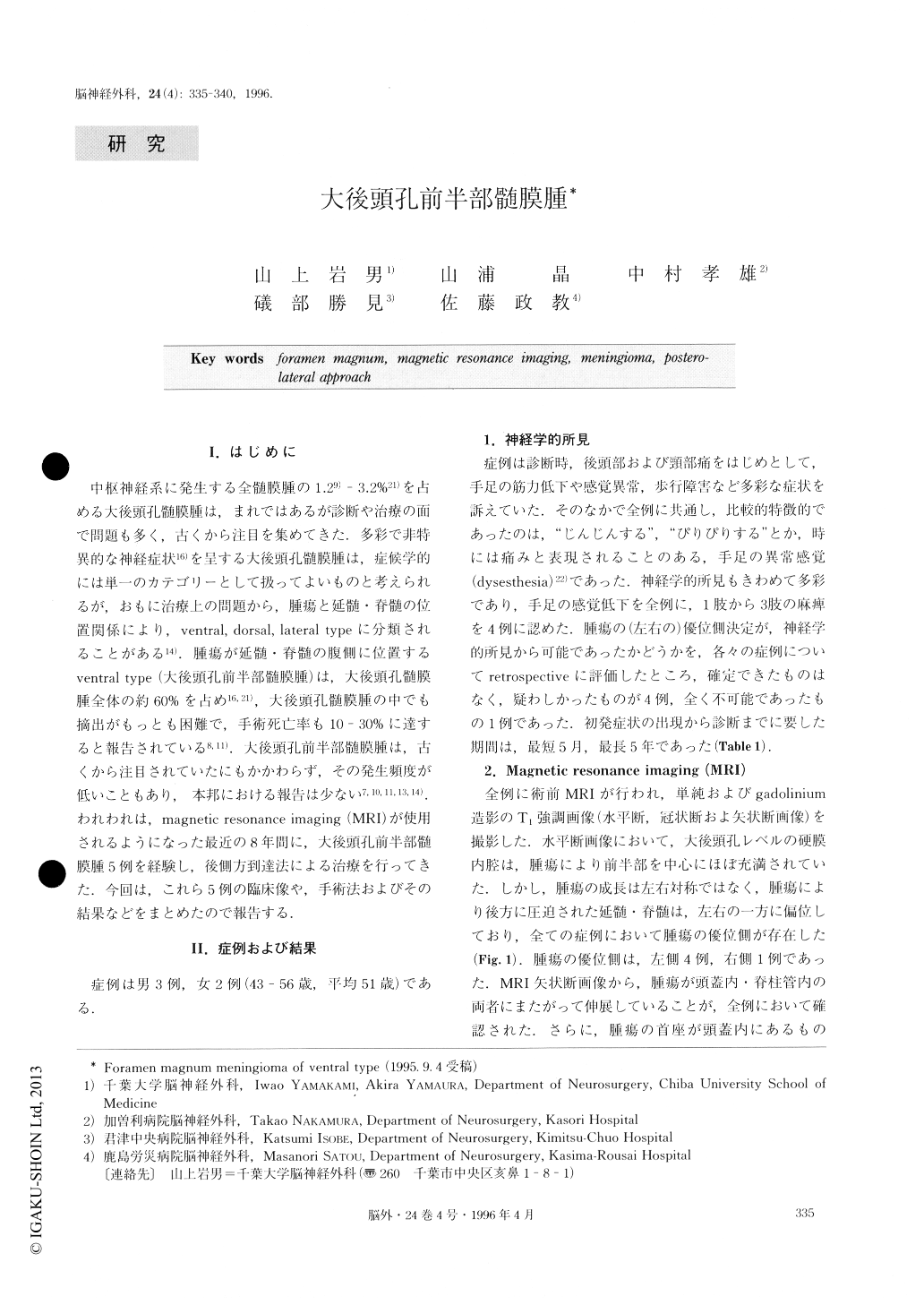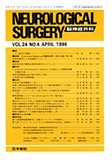Japanese
English
- 有料閲覧
- Abstract 文献概要
- 1ページ目 Look Inside
I.はじめに
中枢神経系に発生する全髄膜腫の1.29)−3.2%21)を占める大後頭孔髄膜腫は,まれではあるが診断や治療の面で問題も多く,古くから注目を集めてきた.多彩で非特異的な神経症状16)を呈する大後頭孔髄膜腫は,症候学的には単一のカテゴリーとして扱ってよいものと考えられるが,おもに治療上の問題から,腫瘍と延髄・脊髄の位置関係により,ventral,dorsal,lateral typeに分類されることがある14).腫瘍が延髄・脊髄の腹側に位置するventral type(大後頭孔前半部髄膜腫)は,大後頭孔髄膜腫全体の約60%を占め16,21),大後頭孔髄膜腫の中でも摘出がもっとも困難で,手術死亡率も10-30%に達すると報告されている8,11).大後頭孔前半部髄膜腫は,古くから注目されていたにもかかわらず,その発生頻度が低いこともあり,本邦における報告は少ない7,10,11,13,14).われわれは,magnetic resonance imaging(MRI)が使用されるようになった最近の8年間に,大後頭孔前半部髄膜腫5例を経験し,後側方到達法による治療を行ってきた.今回は,これら5例の臨床像や,手術法およびその結果などをまとめたので報告する.
We reviewed the clinical findings and the surgical re-sults of five cases of patients with foramen magnum meningioma of ventral type who underwent preopera-tive magnetic resonance imaging (MRI) and tumor re-moval by the posterolateral approach. Patients showed a variety of neurological symptoms and signs including dysesthesia of extremities, but the neurological diagno-sis could not determine the dominant side of the tumor. MRI determined the dominant side of the tumor and this side was chosen as the side of the surgical approach. By MRI findings of the extent of the tumor in the posterior fossa and the spinal canal, patients were classified into three cases of craniospinal type and two cases of spinocranial type. The result of tumor re-moval by the posterolateral approach was a total re-moval in the two cases of spinocranial type and a “near-total” removal in the three cases of craniospinal type. There was no surgical mortality and the surgical morbidity was negligible. The foramen magnum meningioma of ventral type, especially of the spinocra-nial type, can be managed safely and satisfactorily by the posterolateral approach.

Copyright © 1996, Igaku-Shoin Ltd. All rights reserved.


